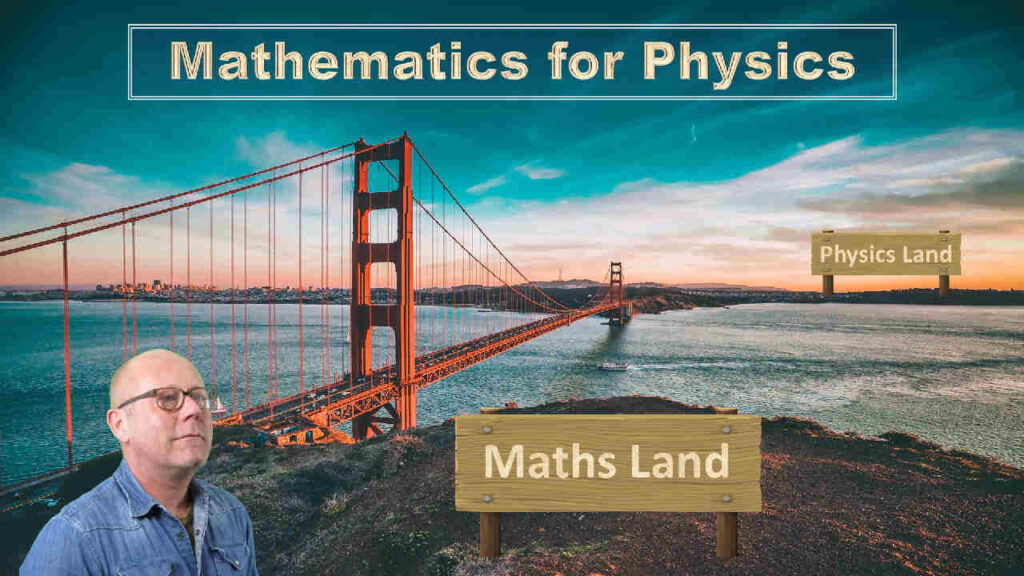Master the mathematical tools used in high school Physics
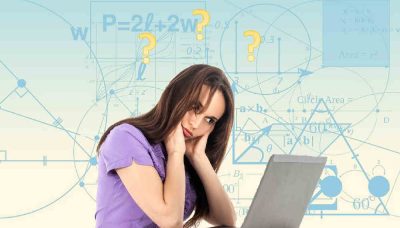
One of the largest problems some students encounter when taking a physics course is… maths.
Getting questions wrong while understanding the underlying concepts can be very frustrating.
If you are in this situation, then, this course is for you!
“Mathematics for Physics” is a bridge between the Maths and the Physics that are taught during the two last years of High School. The main objective is to provide Students with a mathematical Swiss Knife that can be used to solve any high school physics question.
Yes, in High School Physics, maths can be seen as a tool… like a hammer or a screwdriver. This course shows the student how to use such a tool, in the perspective of a physicist, meaning in a practical perspective.

Once the problem with maths out of the way, the progress in physics can be quite astonishing: High school physics student can now perceive Physics under a clearer light, and that’s when studying becomes fun! And when studying is fun, the marks go up!
Structure of the course
Section 1, “Algebra for Physics”
The algebra section teaches how to rearrange Physics equations. We review together:
- What is a mathematical term and why this notion is important in regards to rearranging equations.
- The meaning of the equal sign.
- How to manipulate fractions.
- How to rearrange equations easily using reliable tricks and shortcuts.
Then, it’s training time: The student is invited to rearrange a half dozen equations taken from electric and magnetic fields, motion, oscillations and electric circuits. No prior understanding of these subjects is necessary to manage these exercises. Their resolution only requires algebra.
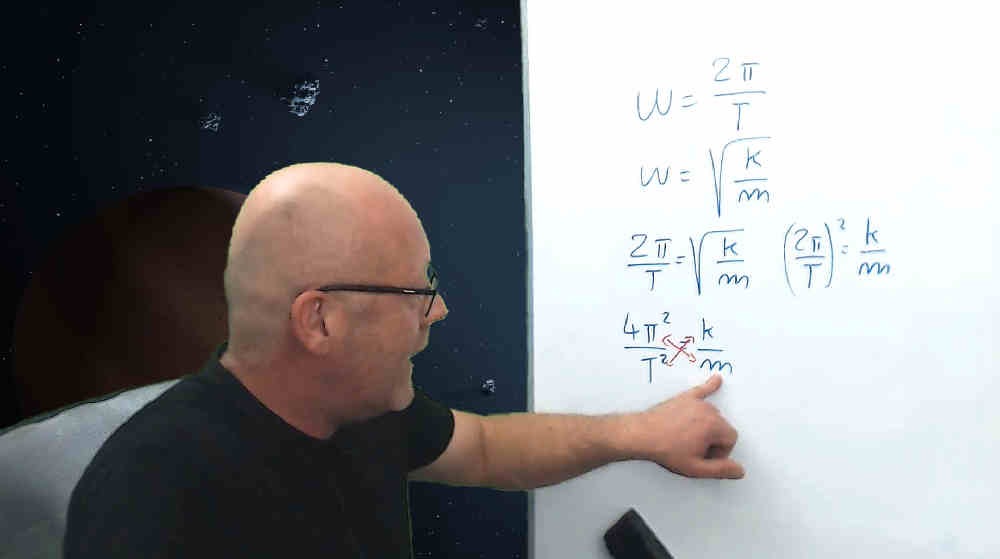
Section 2, ”Vectors for Physics”
This module focuses on vectors by first describing what a vector is and how to represent it in cartesian an polar coordinates. It also explains how to add vectors easily, graphically, and analytically. In addition a video is dedicated on how to apply this knowledge to solve problems in physics. The module concludes with training exercises.
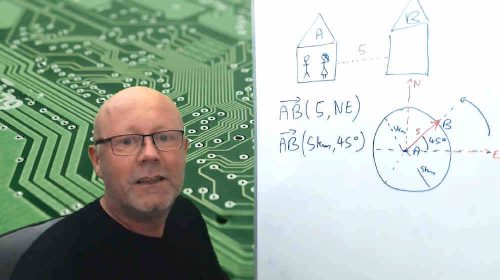
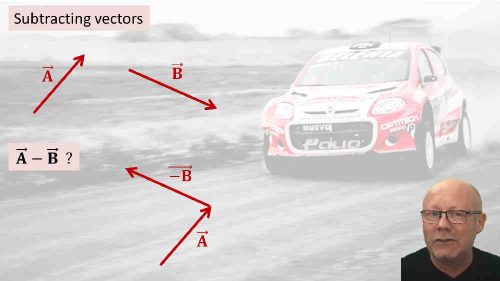
Section 3, ”Trigonometry for Physics”
The Trigonometry section aims at teaching the student the trigonometric notions he or she needs while following a Physics course at high school level:
- What is an angle ?
- What is a cosine? what is a sine? what is a tangent? and how to use them.
- How to link trigonometry to the coordinates of vectors: This is where the student realizes that all pieces of knowledge seen up to now start matching each other like in a puzzle.
- The unit circle and how extremely useful this representation can be in Physics.
- An advanced representation of the unit circle (how to represent graphically sec, cosec, cotan…)
And of course there is some training time! Numerous exercises punctuate with many tips and tricks!
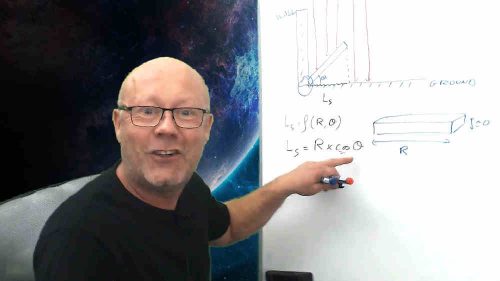
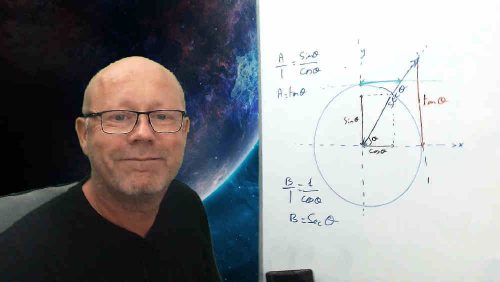
What you will learn
- Use maths effectively when solving exercises in Physics. Students following this course will eliminate the ‘math’ factor in their ability to solve problems in Physics: using Maths will not be a problem anymore for them, instead, it will have become a strength.
- Enjoy the benefits of having a mathematical Swiss Knife available to solve Physics questions in all areas where vectors are used (Mechanics, Electric fields, Gravitational fields etc…).
- Be able to immediately see which one mathematical tool to use depending on the situation.
- Rearrange equations smoothly and reliably.
- Understand what a vector is.
- Manipulate and add vectors graphically and algebraically.
- Determine vector coordinates. Convert vector coordinates from Polar to Cartesian (and vice versa).
- Apply mathematical tools on vectors to Physics Problems (for example calculating a net force).
- Feel comfortable with trigonometry.
- Have a clear view of what is an angle.
- Understand what the cosine, the sine and the tangent of an angle actually is, practically.
- Use trigonometry effectively to solve Physics questions with vectors (for example, calculating magnitude and direction of a vector quantity).
- Realize that the Unit Circle is an incredible ally.
- Estimate Sine and Cosine of an angle without a calculator.
- Represent graphically other trigonometric functions like cotangent, cosec, sec etc…
Who should take the course ?
- Students currently following a Physics course in High School (IB Physics, A-Level Physics, AP Physics, Baccalaureat etc…).
- Students about to start a Physics course at High School.
- Students preparing for a High School end-year exam in Physics and who wish to brush up on the Maths they need in Physics.
- Advanced Middle School student that wishes to get a glimpse of what lies ahead in regards to Maths applied to Physics.
- Any person that would like to reinforce or train their skills in basic high school maths applied to Physics.
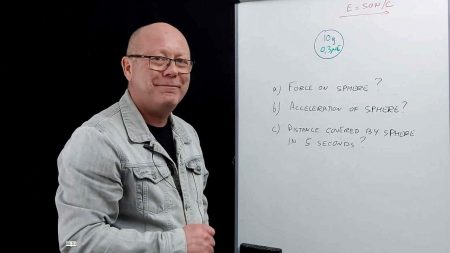

Table of content
Section 1: Algebra for Physics
- Episode 1: Rearranging equations
- Episode 2: Training Exercises
Section 2: Vectors for Physics
- Episode 5: What is a Vector?
- Episode 6: Adding Vectors
- Episode 7: Solving Physics Questions with Vectors (in 1D and 2D)
- Episode 8: Training Exercises
Section 3: Trigonometry for Physics
- Episode 9: What is an Angle?
- Episode 10: Introduction to Trigonometry
- Episode 11: Vectors and Trigonometry Combined: Training Exercises
- Episode 12: The Unit Circle
- Episode 13: The Unit Circle (advanced)

